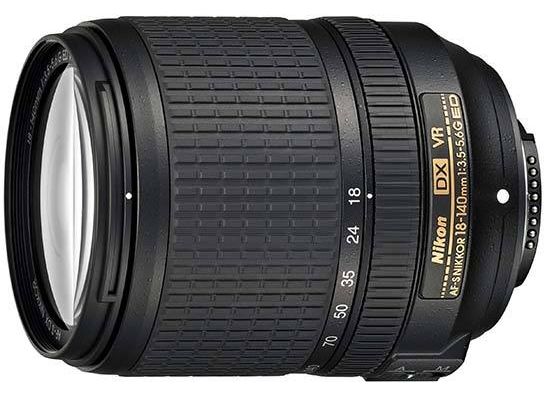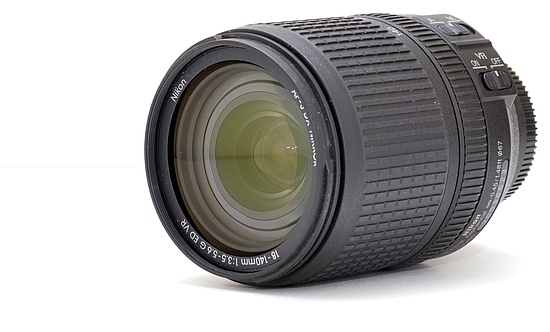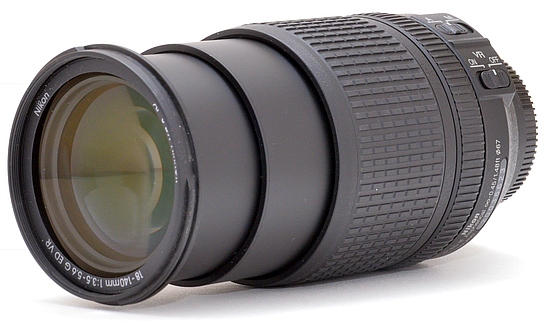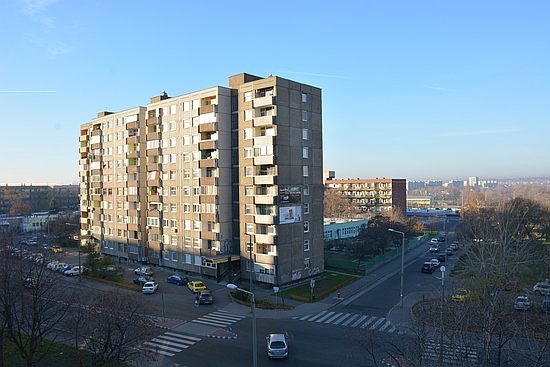Nikon Af-s Dx Nikkor 18-140mm F/35-56g Ed Vr Lens 2213 Reviews

Introduction
The Nikon AF-Southward DX Nikkor 18-140mm f/iii.5-5.6G ED VR is a DX-format lens with a 7.8x zoom ratio and a 35mm equivalent focal range of 27-210mm. The optical formula comprises 17 elements in 12 groups, including ane aspherical and 1 ED lens chemical element. Weighing in at 490 grams, the AF-S DX Nikkor eighteen-140mm f/3.5-5.6G ED VR lens features Nikon'south Vibration Reduction technology to combat blurring that may upshot from shaky hands, while a Silent Wave Motor ensures fast and quiet machine focus. The lens is currently available for £459.00 / $495.95 in the United kingdom and the US, respectively.
Ease of Apply
 The Nikon xviii-140mm VR lens mounted to a Nikon D7100 torso
The Nikon xviii-140mm VR lens mounted to a Nikon D7100 torso
Tipping the scales at 490 grams, the AF-S DX Nikkor 18-140mm f/3.v-5.6G ED VR is not a particularly heavy lens, and information technology balances well on the larger DX bodies such as the Nikon D7100 pictured above.

Build quality is very decent, with a metallic bayonet mount, smooth focus and zoom rings, and very little wobble even when fully extended.

 Zoomed out and zoomed in
Zoomed out and zoomed in
Zooming is not internal – as you lot can see, the front extends considerably upon zooming to 140mm. The ribbed zoom ring is sufficiently broad and neither as well stiff nor as well loose.

The Nikon 18-140mm VR lens has a express feature prepare including an internal focus (IF) machinery, a quiet focus motor, an auto/manual focus switch and Nikon'south Vibration Reduction (VR) image stabilisation organization. There is no distance scale, focus limiter or depth-of-field calibration, however, and you practise non get to choose betwixt Active and Normal VR modes, either. Being a One thousand serial lens, the Nikkor 18-140mm f/3.5-v.6G ED VR also lacks an aperture ring.
 Side of the lens
Side of the lens
The AF-S DX Nikkor xviii-140mm f/iii.5-v.6G ED VR comes without a lens hood as standard, simply is compatible with the separately sold Nikon HB-32 petal shaped hood.
 Rear of lens, isometric view
Rear of lens, isometric view
The lens is not claimed to exist weatherproof, only there is a rubber seal around the lens mountain that should provide basic protection confronting grit and moisture.
Focal Range
At the 18mm stop of the zoom range, the bending of view is 76°, equivalent to that of a 27mm lens in a 35mm system..
 Field of view at 18mm
Field of view at 18mm
At the 140mm end, the angle of view narrows to 11°, which is the aforementioned as that of a 210mm lens on a 35mm full-frame photographic camera.
 Field of view at 140mm
Field of view at 140mm
Focusing
With the lens attached to a D7100, auto-focus is surprisingly fast. While not quite in the same league as the pro zooms (e.1000. the AF-S 24-70mm f/2.eight or 70-200mm f/two.eight), it's definitely capable of keeping quickly and erratically moving subjects in focus. If you thought this was a natural consequence of beingness an AF-S lens, call back again! The AF-S designation, in and of itself, is no guarantee of fast focussing, as we saw when reviewing the 55-300mm f/iv.5-five.six DX telezoom. The fact that information technology worked so well in the case of the DX 18-140mm f/3.5-5.6G ED VR was thus a very pleasant surprise. (Focusing in Alive View or video mode is a completely different story of course.) Thankfully the filter thread does not rotate on focus, making it that much easier to utilize graduated neutral density filters and polarisers. The lens takes 67mm filters.
Manual focusing is likewise possible via the polish only somewhat narrow focus band located close to the lens mountain. For an AF lens, the focus band has a fairly generous amount of travel, which makes it easier to ready focus precisely.
Distortion

At the 18mm setting, there is some barrel baloney, as demonstrated in the photo above. This turns into mild pincushion distortion in the telephoto range.
Chromatic Aberrations
Lateral chromatic aberrations, typically seen as majestic or blue fringes in the peripheral areas of the image, are very well controlled with this lens. The 100% crops below give you lot an idea of what you should expect in the worst example.
Macro
This is non a macro lens. The maximum reproduction ratio of the Nikon 18-140mm VR is approximately 1:4.4, which means that you lot tin fill the frame with a subject area that measures around 100x67mm. Sharpness in the close-up range isn't stellar but distortions are negligible if shooting at the 140mm finish. The post-obit image illustrates how shut you tin get to the bailiwick; in this example, a Meaty Flash card.
 Close-up performance
Close-up performance
Bokeh
Bokeh is a word used for the out-of-focus areas of a photo, and is usually described in qualitative terms, such as shine / creamy / harsh etc. In the AF-S Nikkor 18-140mm f/3.5-5.6G ED VR, Nikon employed an iris diaphragm with 7 blades, which has resulted in a somewhat "nervous" bokeh, at least in our stance. Still, recognising that bokeh evaluation is subjective, we have provided a few examples for your perusal.
Sharpness
In order to show you how sharp this lens is, we are providing 100% crops on the post-obit pages.
- Ease
of Use - Sample
Images - Lens
Specs - Rating &
Conclusion - Main
Rivals - Review
Roundup
Source: https://www.photographyblog.com/reviews/nikon_afs_dx_nikkor_18_140mm_f_3_5_5_6_g_ed_vr_review
0 Response to "Nikon Af-s Dx Nikkor 18-140mm F/35-56g Ed Vr Lens 2213 Reviews"
Enregistrer un commentaire